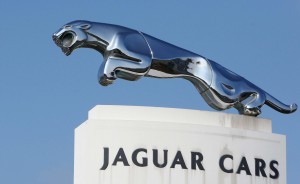First Drive: Jaguar XF Sportbrake
If there’s one thing prospective Jaguar buyers have been missing, it’s an estate car.
A traditional load-lugger has been conspicuously absent from the firm’s range, and an omission its rivals have capitalised upon for many years.
Given the recent change of ownership from Ford to Tata and the slew of new or revised products that have come from both Jaguar and Land Rover in recent years – both brands are under the same roof – you could excuse the firm for being a little busy.
The patience of those prospective buyers has finally been rewarded, as early 2012 saw Jaguar unveil its long awaited XF estate car – the Sportbrake.
For a company with apparently minimal experience making estate cars, the end product is thoughtfully constructed and styled.
Looks-wise, the XF wagon’s profile is elegant yet functional, while there’s never any impression that the load-lugging bit is merely window dressing.
On paper the XF Sportbrake promises to be versatile and practical. Boasting a near-flat-fold rear seat mechanism including through-load flap and 60-40 fold split, total volume is a competitive 1,675 litres
Factor in some extra space below the boot floor, a fraction more rear headroom, plus a host of options to make life easy – dividers, boot liners, roof racks and boxes, tow bar, cycle racks, powered tailgate – and it’s clear that Jaguar is keen to tempt buyers away from established cars from Mercedes, BMW and Audi.
With everything save the rear doors new from the B-pillar back to the uncluttered tailgate, the XF Sportbrake is a bold statement of intent from Jaguar considering that the car will be targeted at only the European market for the foreseeable future.
Unlike the saloon and SUV-centric American and Asian markets, European buyers have a soft spot for estates.
And they also like diesel engines, which is why this XF is diesel-only.
For the cost- and tax-conscious buyers, there’s a 2.2-litre four-cylinder unit in 163 and 200 horsepower trim, plus Jaguar’s 3.0-litre V6 unit offered in 240 and 275 horsepower trim.
Predictably the smaller engine will appeal to company car drivers and the latter to private buyers, and there’s a noticeable uplift in driver appeal if you go for the V6. Smooth, refined and plenty quick enough in the real world, it’s an engine that suits the car’s laidback approach to performance.
Of course, the bean counters will prefer the 2.2-litre unit. Although it uses the same eight-speed auto gearbox as the V6, this is a car that doesn’t like to be rushed and is more at home being driven at a relaxed pace.
That said, both cars gain self-levelling rear suspension to ensure a safe and level attitude regardless of what’s in the back and how enthusiastic you are at the wheel, while the optional Adaptive Dynamics system boasts computer-controlled dampers to further reduce pitch and roll when on the move – something the keen drivers will no doubt welcome.
With all this focus on the XF’s rear, it’s easy to forget designer Ian Callum’s 2012 revisions – lights, grille, bumpers – that do much to ensure the car maintains its stylistic edge over its more fussy and distinctly rivals.
And although decidedly minimalist by current standards, the few subtle changes made to the cabin’s switchgear and trim options have also added a welcome new layer of sophistication.
A popular car in saloon guise since its introduction, this Sportbrake variant is proof that Jaguar’s design and engineering talent isn’t restricted to saloons and sports cars. This car’s thoughtful and fuss-free exterior is matched by a practical interior, plus a range of useful and stylish accessories.
That the Sportbrake retains the driving appeal of its saloon cousin is the icing on the cake, and further illustrates the company’s no-compromise approach to delivering a car designed to appeal to the head and the heart in equal measure.
FACTS AT A GLANCE
Model: Jaguar XF Sportbrake 3.0 Diesel S Portfolio, from £51,505
Engine: 3.0-litre diesel unit developing 275bhp
Transmission: Eight-speed manual transmission as standard, driving the rear wheels
Performance: Maximum speed 155mph, 0-62mph 6.6 seconds
Economy: 46.3mpg
CO2 Rating: 163g/km
Latest posts by Sally - Silversurfer's Editor (see all)
- 5 edible uses for Borage - April 28, 2024
- How to keep your tulips lasting longer - April 25, 2024
- Do you sleep with a snorer? - April 25, 2024
- Holiday hack: How to win a GHA DISCOVERY Titanium status upgrade - April 23, 2024
- British Asparagus and Pea Risotto with Lemon and Crème Fraiche - April 23, 2024






















